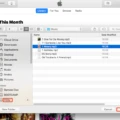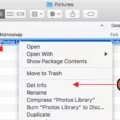Data transfer is an essential task when transitioning from a PC to a Macbook Pro. Whether you’re transferring important documents, precious photos, or crucial email accounts, it’s crucial to know the most efficient methods to get the job done. In this article, we will explore two popular methods: using Migration Assistant and utilizing file sharing.
Method 1: Using Migration Assistant
Migration Assistant is a built-in tool on macOS that simplifies the process of transferring data from a PC to a Mac. Here’s how to use it:
1. Open Migration Assistant on your new Macbook Pro.
2. When prompted, enter your administrator password to allow necessary changes.
3. Choose the option to transfer from a Mac, Time Machine backup, or startup disk.
4. Connect your PC and Macbook Pro using a wired or wireless connection.
5. Follow the on-screen instructions to select the data you want to transfer, such as contacts, calendars, email accounts, files, and applications.
6. Once the transfer is complete, review the transferred data on your Macbook Pro to ensure everything transferred correctly.
Method 2: Using File Sharing
If you prefer not to use Migration Assistant, you can transfer data from your PC to your Macbook Pro using file sharing. Here’s how:
1. On your PC, navigate to the Settings app > Network & internet.
2. Click on “Status” in the left sidebar.
3. Under “Change network settings,” choose the Sharing options.
4. Depending on your current connection, expand either the Private Network or Public Network menu.
5. Enable file sharing and note down the network address provided.
6. On your Macbook Pro, open Finder and click on “Go” in the menu bar.
7. Select “Connect to Server” and enter the network address from your PC.
8. Authenticate with your PC username and password.
9. Once connected, you can browse and transfer files between your PC and Macbook Pro.
Additional Transfer Methods:
Apart from the methods mentioned above, there are a few other ways you can transfer data from your PC to your Macbook Pro:
1. Use an external hard drive: Copy the files from your PC to an external hard drive, then connect the hard drive to your Macbook Pro and copy the files onto it.
2. Utilize cloud storage: Upload your files to a cloud storage service like Dropbox, Google Drive, or OneDrive from your PC, and then download them on your Macbook Pro.
3. Transfer via USB stick: Connect a USB stick to your PC, copy the files onto it, and then plug it into your Macbook Pro to transfer the files.
Remember to organize your files properly during the transfer process to avoid any confusion or loss of data. By following these methods, you can ensure a smooth and hassle-free transfer of your data from your PC to your Macbook Pro.

Can You Transfer Data From a PC to a Macbook?
It is possible to transfer data from a PC to a MacBook. Apple provides a tool called Migration Assistant that makes the process relatively easy. Migration Assistant allows you to transfer your contacts, calendars, email accounts, documents, photos, music, and other files from your Windows PC to your Mac.
Here’s how you can use Migration Assistant to transfer your data:
1. Make sure both your PC and Mac are connected to the same network, either via Wi-Fi or Ethernet.
2. On your Mac, open the Applications folder and go to Utilities. Then, launch Migration Assistant.
3. On your PC, open a web browser and download the Windows Migration Assistant from the Apple website.
4. Run the Windows Migration Assistant on your PC and follow the on-screen instructions to create a secure connection between your PC and Mac.
5. On your Mac, Migration Assistant will detect your PC and display it on the screen. Select your PC and click “Continue.”
6. You will be prompted to enter the security code displayed on your PC. Enter the code on your Mac and click “Continue.”
7. On your PC, you will be asked to select the data you want to transfer. Choose the data you want to transfer and click “Continue.”
8. Migration Assistant will start transferring your selected data from your PC to your Mac. The time required for the transfer will depend on the amount of data being transferred.
9. Once the transfer is complete, you can disconnect your PC from the network.
10. On your Mac, you can find the transferred data in the appropriate locations. For example, contacts and calendars will be synced with the Contacts and Calendar apps, and files will be located in the Documents, Music, or Photos folders.
It’s important to note that not all files may be compatible between Windows and macOS. Some software or file formats may not work on your Mac, so it’s a good idea to check for compatibility before transferring certain files.
Migration Assistant is a useful tool provided by Apple to transfer data from a PC to a MacBook. It simplifies the process and allows you to easily transfer your contacts, calendars, email accounts, and other files to your Mac.
How Do You Transfer Files From PC to Mac Via USB?
To transfer files from a PC to a Mac using a USB stick, follow these steps:
1. Connect the USB stick to an available USB port on your PC.
2. Open the file explorer on your PC and locate the files you want to transfer.
3. Copy the files by right-clicking on them and selecting “Copy” or by using the Ctrl+C keyboard shortcut.
4. Open the USB stick on your PC by double-clicking on its icon in the file explorer.
5. Paste the copied files onto the USB stick by right-clicking inside the USB stick folder and selecting “Paste” or by using the Ctrl+V keyboard shortcut.
6. Wait for the files to finish copying onto the USB stick. You can monitor the progress by checking the file transfer status.
7. Once the files are successfully copied, safely remove the USB stick from your PC. Right-click on the USB stick icon in the file explorer and select “Eject” or “Safely Remove Hardware” to ensure that no data is lost during the removal process.
8. Now, unplug the USB stick from your PC and connect it to an available USB port on your Mac.
9. On your Mac, open the Finder by clicking on the Finder icon in the dock.
10. Locate and select the USB stick from the list of devices and drives in the Finder sidebar.
11. Double-click on the USB stick to open it and access the files stored on it.
12. Select the files you want to transfer to your Mac by clicking on them.
13. Copy the selected files by right-clicking and choosing “Copy” or using the Command+C keyboard shortcut.
14. Navigate to the destination folder on your Mac where you want to transfer the files.
15. Paste the copied files into the destination folder by right-clicking inside the folder and selecting “Paste” or using the Command+V keyboard shortcut.
16. Wait for the files to finish copying onto your Mac. You can monitor the progress by checking the file transfer status.
17. Once the files are successfully copied, safely remove the USB stick from your Mac. You can do this by dragging the USB stick icon to the trash or using the eject button next to the USB stick in the Finder sidebar.
18. Congratulations! You have successfully transferred files from your PC to your Mac using a USB stick. You can now access and use the files on your Mac as needed.
Note: Make sure that the USB stick is formatted in a compatible file system that both Windows and macOS can read, such as FAT32 or exFAT, to ensure smooth file transfer between the two operating systems.
How Do You Transfer Everything to Your Macbook?
To transfer everything to your Macbook, you can use Migration Assistant. Follow these steps:
1. Open Migration Assistant on your new Macbook. You can find it in the Utilities folder, which is located within the Applications folder.
2. When prompted, enter your administrator password and click “OK” to grant permission for making changes.
3. Select the option to transfer your information from a Mac, Time Machine backup, or startup disk. This will allow you to transfer data from your old Mac or from a backup.
4. Connect your old Mac or Time Machine backup to your new Macbook using a suitable connection method. This could be a wired connection or over a local network.
5. Once the connection is established, Migration Assistant will display a list of items that can be transferred. You can choose which items you want to transfer, such as files, applications, user accounts, and settings.
6. Review the transfer options and customize them according to your preferences. You can select specific users, applications, or folders to transfer.
7. Click “Continue” to begin the transfer process. The time it takes will depend on the amount of data being transferred.
8. Once the transfer is complete, you will be notified. You can then safely disconnect your old Mac or Time Machine backup.
9. Set up your new Macbook by following the on-screen instructions. You may be prompted to create a user account and customize settings.
10. After the setup is complete, you should find all your transferred data, applications, and settings on your new Macbook.
It’s worth noting that Migration Assistant is a convenient way to transfer data, but it may not transfer certain third-party applications or system settings. In those cases, you may need to manually reinstall or reconfigure them on your new Macbook.
How to Transfer Files From PC to Mac Without Migration Assistant?
To transfer files from a PC to a Mac without using the Migration Assistant, you can utilize the file sharing feature. Here is a step-by-step guide:
1. On your Mac, open the Settings app by clicking on the Apple menu and selecting “System Preferences”.
2. In the System Preferences window, click on “Network & Internet” or “Network” depending on your macOS version.
3. On the left sidebar, click on “Status” to view your network connections.
4. Under the “Change network settings” section, locate and choose the “Sharing options” button.
5. In the Sharing options menu, you will see different sharing options based on your current connection. Expand either the “Private Network” or “Public Network” menu, depending on your network settings.
6. Enable the “File Sharing” option by ticking the checkbox next to it. This will allow your Mac to share files with other devices on the network.
7. Next, click on the “Options…” button to customize the file sharing settings.
8. In the File Sharing options, check the box next to your user account under the “Windows File Sharing” or “SMB” section. This will grant access to your Mac’s files from a Windows PC.
9. Click on “Done” to save the changes and exit the File Sharing options.
10. On your PC, open the File Explorer and navigate to the folder or files you want to transfer to your Mac.
11. Right-click on the folder or files, and select “Properties”.
12. In the Properties window, go to the “Sharing” tab.
13. Click on the “Share” button and select the user account associated with your Mac.
14. Choose the appropriate access level (such as “Read” or “Read/Write”) and click on “Share”. This will make the folder or files accessible to your Mac.
15. On your Mac, open the Finder and click on “Go” in the menu bar.
16. Select “Connect to Server” and enter the IP address or network name of your Windows PC. You can find the IP address by opening the Command Prompt on your PC and typing “ipconfig” followed by Enter.
17. Click on “Connect” and enter the login credentials for your Windows PC when prompted.
18. Once connected, you will be able to access and transfer the shared files from your PC to your Mac through the Finder.
By following these steps, you can successfully transfer files from your PC to your Mac without using the Migration Assistant.
Conclusion
There are several methods available for transferring data from a Windows PC to a Mac. The most convenient and comprehensive option is to use the Migration Assistant tool, which allows you to transfer contacts, calendars, email accounts, and more. This tool simplifies the process and ensures that all your important data is transferred accurately.
Alternatively, you can manually copy files from your PC to a USB stick or external hard drive, and then transfer them to your Mac. This method requires more effort and organization, as you need to manually select and copy the files you want to transfer. However, it can be a suitable option if you only need to transfer a small number of files.
If you prefer not to use the Migration Assistant or manual file transfer methods, you can also utilize file sharing between your PC and Mac. This involves configuring network settings and sharing options, allowing you to access and transfer files directly between the two devices. While this method may require some technical knowledge, it provides flexibility and convenience for transferring data.
The choice of method for data transfer depends on your specific needs and preferences. The Migration Assistant tool is recommended for a comprehensive and hassle-free transfer, while manual file transfer and file sharing methods offer more flexibility and control. Whichever method you choose, ensure that you have a backup of your data and follow the necessary steps to ensure a successful transfer.













